- Home
- Clive Cussler
Atlantis Found dp-15 Page 27
Atlantis Found dp-15 Read online
Page 27
Sandecker gestured the end of his cigar at the historian. "Dr. Stevens, I assume you've examined the obsidian skulls?"
"I have." Stevens leaned down, opened the ice chest, lifted out one of the black skulls, and set it upright on a large silk pillow laid on the conference table. The glossy obsidian gleamed under the overhead spotlights. "A truly remarkable piece of work," he said reverently. "Amenes artisans began with a solid block of obsidian- one that was incredibly pure of imperfections- a rarity in itself. Over a period of at least ninety to a hundred years, and perhaps more, the head was shaped by hand, using what I believe was obsidian dust as a smoothing agent."
"Why not some type of hardened metal chisels tapped by a mallet?" asked Giordino.
Stevens shook his head. "No tools were wielded. There are no signs of scratches or nicks. Obsidian, though extremely hard, is very prone to fracture. One slip, one misplaced angle of a chisel, and the whole skull would have shattered. No, the shaping and polishing had to be accomplished as if a marble bust had been delicately smoothed by car polish."
"How long would it take to reproduce with modern tools?"
Stevens gave a faint grin. "Technically, it would be next to impossible to create an exact replica. The more I study it, the more I become convinced it shouldn't exist."
"Are there any markings on the base to suggest a source?" asked Sandecker.
"No markings," answered Stevens. "But let me show you something that's truly astonishing." With extreme care he slowly made a twisting motion, as he lifted the upper half of the skull until it came free. Next he removed a perfectly contoured globe from the skull cavity. Holding it devoutly in both hands, he lowered it onto a specially prepared cushioned base. "I can't begin to imagine the degree of artistic craftsmanship it took to produce such an astonishing object," he said admiringly. "Only while studying the skull under strong magnification did I see a line around the skull plate that was invisible to the naked eye."
"It's absolutely fabulous," murmured Pat in awe.
"Are there carvings on the globe?" Pitt asked Stevens.
"Yes, it's an engraved illustration of the world. If you care to view it more closely, I have a magnifying glass."
He handed the thick glass to Pitt, who peered at the lines inscribed on the globe that was about the size of a baseball. After a minute, he carefully slid the globe across the table in front of Sandecker and passed him the magnifying glass.
While the admiral was examining the globe, Stevens said, "By comparing the photographs taken inside the chamber in Colorado with those from St. Paul Island, I found that the continents perfectly match those of the obsidian globe."
"Meaning?" asked Sandecker.
"If you study the alignment of the continents, and large islands such as Greenland and Mozambique, you'll find they don't match the geography of the world today."
"I observed the differences, too," said Pitt.
"What does that prove?" asked Giordino, playing the role of skeptic. "Except that it's a primitive, inaccurate map?"
"Primitive? Yes. Inaccurate? Perhaps by modern standards. But I strongly support the theory that these ancient peoples sailed every sea on earth and charted thousands of miles of coastlines. If you look closely at the obsidian globe, you can see they even defined Australia, Japan, and the Great Lakes of North America. All this by people who lived more than nine thousand years ago."
"Unlike the Atlantis that was described by Plato as having existed on a single island or continent," Pat spoke up, "the Amenes engaged in worldwide commerce. They went far beyond the bounds of much later civilizations. They were not restricted by tradition or fear of the unknown seas. The inscriptions detail their sea routes and vast trading network that took them across the Atlantic and up the St. Lawrence River to Michigan, where they mined copper; and to Bolivia and the British Isles, where they mined tin, using advanced developments in metallurgy to create and produce bronze, thereby lifting mankind from the Stone Age to the Bronze Age."
Sandecker leaned across the table. "Surely they mined and traded in gold and silver."
"Strangely, they did not consider gold or silver useful metals, and preferred copper for their ornaments and art works. But they did journey around the world in search of turquoise and black opal, which they fashioned into jewelry. And, of course, obsidian, which was almost sacred to them. Obsidian, by the way, is still used in open-heart surgery, because it has a sharper edge that causes less tissue damage than steel."
"Both turquoise and black opal were represented on the mummies we found in the burial chamber," added Giordino.
"Which demonstrates the extent of their reach," said Pat. "The rich robin's-egg blue I saw in the chamber could only have come from the American Southwest deserts."
"And the black opal?" asked Sandecker.
"Australia."
"If nothing else," said Pitt thoughtfully, "it confirms that the Amenes had knowledge of nautical science and learned to build ships capable of sailing across the seas thousands of years ago."
"It also explains why their communities were built as port cities," Pat summed up. "And according to what was revealed by the photographs in the burial chamber, few societies in the history of man were so farthing. I've located over twenty of their port cities in such diverse parts of the world as Mexico, Peru, India, China, Japan, and Egypt. Several of them are in the Indian Ocean and a few on islands of the Pacific."
"I can back up Dr. O'Connell's findings with my own on the globes from the skull," said Stevens.
"So their world was not based around the Mediterranean, as later civilizations were?" said the admiral.
Stevens gave a negative shake of his head. "The Mediterranean was not open to the sea during the Amenes' era. Nine thousand years ago, the Med, as we know it, was made up of fertile valleys and lakes fed by European rivers to the north and the Nile to the south, which merged and then flowed through the Straits of Gibraltar into the Atlantic. You might also be interested in knowing that the North Sea was a dry plain and the British Isles were part of Europe. The Baltic Sea was also a broad valley above sea level. The Gobi and Sahara deserts were lush tropical lands that supported huge herds of animals. The ancient ones lived on a planet very different from the one we live on."
"What happened to the Amenes?" asked Sandecker. "Why hasn't evidence of their existence come down to us before now?"
"Their civilization was utterly destroyed when a comet struck the earth around 7000 B.C. and caused a worldwide cataclysmic disaster. That's when the land bridge from Gibraltar to Morocco was breached and the Mediterranean became a sea. Shorelines were inundated and changed forever. Within the time it takes for a raindrop to fall from a cloud, the sea people, their cities, and their entire culture were erased from the earth and lost until now."
"You deciphered all that from the inscriptions?"
"That and more," Yaeger answered earnestly. "They describe the horror and suffering in vivid detail. The impact of the comet was gigantic, sudden, appalling, and deadly. The inscriptions go on to tell of mountains shaking like willows in a gale. Earthquakes shook with a magnitude that would be inconceivable today. Volcanoes exploded with the combined force of thousands of nuclear bombs, filling the sky with layers of ash a hundred miles thick. Pumice blanketed the seas as dense as ten feet. Rivers of lava buried most of what we call the Pacific Northwest. Fires spread under hurricanelike winds, creating towering clouds of smoke that blanketed the sky. Tidal waves, perhaps as much as three miles high, swept over the land. Islands vanished, buried under water for all time. Most of the people and all but a handful of animals and sea life disappeared in a time span of twenty-four hours."
Giordino put his hands behind his head and looked up at the ceiling, trying to picture in his mind the terrible devastation. "So that explains it- the sudden extinction in the Americas of the saber-toothed tiger, the humped-back camel, the musk oxen, that giant bison with a horn spread of six feet, the woolly mammoth, the small shaggy horse that once roa
med the plains of North America. And the instant turning to stone of clams, soft jellyfish, oysters, and starfish- you remember we discovered them during projects coring under the sediments. These discrepancies have always been an enigma to scientists. Now maybe they can tie it to the comet's impact."
Sandecker stared at Giordino with an appraising look in his eyes. The short Etruscan possessed a brilliant mind, but worked to conceal it behind a sardonic wit.
Stevens pulled out his pipe and toyed with it. "It's well known in the scientific community that mass global extinctions of animals weighing over a hundred pounds occurred in unison with the end of the last ice age, about the same time as the comet's impact. Mastodons were found preserved by ice in Siberia, the food undigested in their stomach, establishing the fact that they died quite suddenly, almost as if sent into an instant deep freeze. The same with trees and plants that were found frozen while in leaf and in bloom."
The degree of horror could not be completely imagined by anyone sitting at the table. The scope was simply too enormous for them to conceive.
"I'm not a geophysicist," said Stevens quietly, "but I cannot believe that a comet striking the earth, even a large one, could cause such tremendous destruction on such a massive scale. It's inconceivable."
"Sixty-five million years ago, a comet or asteroid killed off the dinosaurs," Giordino reminded him.
"It must have been one enormous comet," said Sandecker.
"Comets can't be measured like asteroids or meteors that have a solid mass," Yaeger lectured. "Comets are a composite of ice, gas, and rocks."
Pat continued reciting the story of the inscriptions without reading from her notes. "Some of the inhabitants of Earth who survived lived, farmed, and hunted in the mountains and high plains. They were able to escape the aftermath of horror by going underground or hiding in caves, existing on whatever pitiful vegetation and flora that could revive and grow under unhealthy conditions, along with the few animals left to hunt. Many died of starvation or from the gaseous clouds smothering the atmosphere. Only a scant handful of the Amenes who happened to be on high ground during the tidal waves survived."
"The story of what has come down to us as the deluge," clarified Stevens, "has been recorded by Sumerian tablets dating back five thousand years in Mesopotamia- the legend of Gilgamesh and the flood predates the biblical story of Noah and the ark. Stone records of the Mayans, written records by Babylonian priests, legends handed down by every cultural race of the world, including the Indians throughout North America, all tell of a great inundation. So there is little doubt the event actually occurred."
"And now," said Yaeger, "thanks to the Amenes, we have a date of approximately 7100 B.C."
"History tells us that the more advanced the civilization," Stevens commented, "the more easily it will die and leave little or nothing of itself behind. At least ninety-nine percent of the grand total of ancient knowledge has been lost to us through natural disasters and man's destruction."
Pitt nodded in agreement. "A golden age of ocean navigation seven thousand years before Christ, but nothing to show for it but inscriptions in rock. A pity we can't have more to inherit from them."
Sandecker exhaled a cloud of blue smoke. "I sincerely hope that won't be our fate."
Pat took over from Yaeger. "Those who remained of the Amenes formed a small cult and dedicated themselves to educating the remaining Stone Age inhabitants in arts and written communication, as well as teaching them how to construct substantial buildings and ships to sail the seas. They tried to warn future generations of another coming cataclysm, but those who came later and had not lived during the comet's destruction and horrible aftermath could not bring themselves to accept that such a traumatic episode from the past would repeat itself. The Amenes realized the awful truth would soon become lost in the mists of time, recalled only in a score of myths. So they attempted to leave a legacy by building great monuments of stone to last throughout the centuries, engraved with their message of the past and future. The great megalithic cult they created became widespread and lasted for four thousand years. But time and the elements eroded the inscriptions and erased the warnings.
"After the Amenes finally died out, centuries of paralysis set in before the Sumerians and Egyptians began to emerge from primitive cultures and gradually build new civilizations, using bits and pieces of the knowledge from the distant past."
Pitt tapped a pencil on the table. "From what little I know on the subject of megaliths, it would seem that later cultures, having lost the original intent of the Amenes through the centuries, used monumental structures as temples, tombs, and stone calendars, eventually building thousands of their own."
"In studying the available data on megaliths," said Yaeger, "the very early structures show that the Amenes had a distinct form of architecture. Their style of building was mostly circular, with triangular-shaped stone blocks cut like interlocking pieces of a jigsaw puzzle, making them almost impervious to any movement of the earth, regardless of how severe."
Stevens spoke very deliberately, as he replaced the globe in its socket inside the black skull. "Thanks to the efforts of Mr. Yaeger and Dr. O'Connell, it's beginning to look as if elements of the Amenes culture and ancient heritage were passed through the centuries and eventually absorbed by the Egyptians, Sumerians, the Chinese, and Olmecs, who preceded the Mayans, and both the Asian Indians and the American Indians. The Phoenicians, more than any other civilization, took up the torch of deep-ocean navigation.
"Their revelations also help to explain why most of the gods and deities from nearly every later civilization in every part of the world came from the sea, and why all the gods setting foot in the Americas came from the east while the gods appearing in the early European cultures came from the west."
Sandecker stared at his cigar smoke spiraling to the ceiling. "An interesting point, Doctor, that answers any number of questions about our ancient ancestors that we've puzzled over for hundreds of years."
Pitt nodded at Pat. "What finally happened to the last of the Amenes?"
"Frustrated that their message would not be received and acted upon, they built chambers in different parts of the world that they hoped would not be found for thousands of years, and only then by future civilizations with the science to understand their message of danger."
"Which was?" prompted Sandecker.
"The date of the second comet's return to earth's orbit and the almost certain impact."
Stevens wagged his finger to make a point. "A recurring theme in mythology is that the cataclysm with its accompanying deluge will repeat itself."
"Hardly a cheery thought," said Giordino.
"What made them so certain there would be another devastating visitor from outer space?" wondered Sandecker.
"The inscriptions describe in great detail two comets that arrived at the same time," answered Yaeger. "One impacted. The other missed and returned to space."
"Are you suggesting the Amenes could accurately predict the date of the second comet's return?"
Pat simply nodded.
"The Amenes," said Yaeger, "were masters not only of the seas but of the heavens as well. They measured the movement of the stars with uncanny accuracy. And they did it without powerful telescopes."
"Suppose the comet does come back," said Giordino. "How could they know it wouldn't miss the earth and sail off into the great beyond again? Was their science so sophisticated they could calculate the time of impact at the exact position of the earth's orbit in space?"
"They could and did," Pat retorted. "By computing and comparing the different positions of the stars and constellations between the ancients' star map in the Colorado chamber with present astronomical star positions, we were able to arrive at our own date in time. It matched the Amenes prediction within an hour.
"The Egyptians devised a double calendar that's far more intricate than what we use today. The Mayans measured the length of the year at 365.2420 days. Our calculation using atomic
clocks is 365.2423. They also computed incredibly accurate calendars based on the conjunctions of Venus, Mars, Jupiter, and Saturn. The Babylonians determined the sidereal year at 365 days, 6 hours, and 11 minutes. They were off by less than two minutes." Pat paused for effect. "The Amenes' computation for the earth's circuit of the sun was off by two-tenths of a second. They based their calendar on a solar eclipse that occurred on the same day of the year at the same site on the zodiac every 521 years. Their celestial map of the heavens, as observed and calculated nine thousand years ago, was right on the money."
"The question on all our minds now," said Sandecker, "is at what point in time did the Amenes predict the reappearance of the comet?"
Pat and Yaeger exchanged sober looks. Yaeger spoke first. "We learned from a computer search of ancient archaeoastronomy files and papers from the archives of several universities that the Amenes were not the only ancient astronomers to predict a second doomsday. The Mayans, the Hopi Indians, the Egyptians, the Chinese, and several other pre-Christian civilizations all came up with dates for the end of the world. The disturbing part is that, collectively, they arrived within a year of each other."
"Could it be simply a coincidence or one culture borrowing from another?"
Yaeger shook his head doubtfully. "It's possible they copied what was passed on by the Amenes, but indications are that their studies of the stars only confirmed the impact time passed on by those they considered as ancients."
"Who do you think were the most accurate in their prediction?" asked Pitt.
"Those of the Amenes who survived, because they were present during the actual catastrophe. They predicted not only the year but the exact day."
"Which is?" Sandecker prompted expectantly.
Pat sank in her chair as if retreating from reality. Yaeger hesitated, looking around the table from face to face. At last he said in a halting voice, "The time the Amenes predicted the comet would return and shatter the earth is May 20, in the year 2001."
Pitt frowned. "This is 2001."

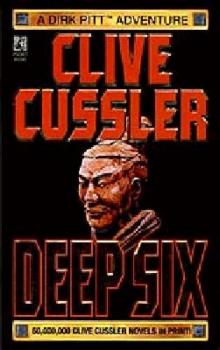 Deep Six
Deep Six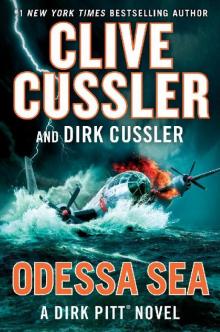 Odessa Sea
Odessa Sea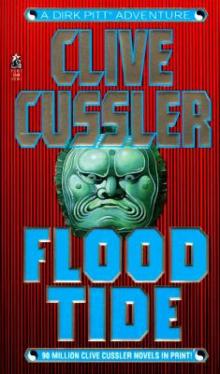 Flood Tide
Flood Tide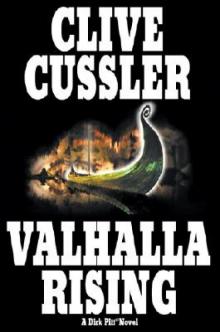 Valhalla Rising
Valhalla Rising Thriller 2
Thriller 2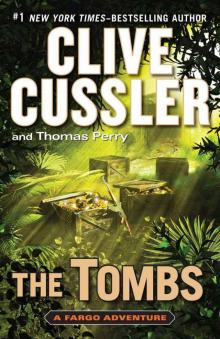 The Tombs
The Tombs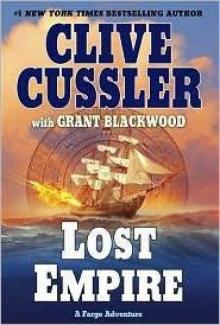 Lost Empire
Lost Empire The Gray Ghost
The Gray Ghost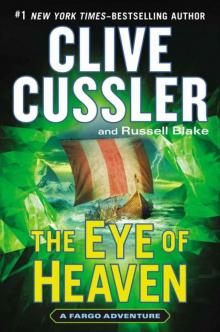 The Eye of Heaven
The Eye of Heaven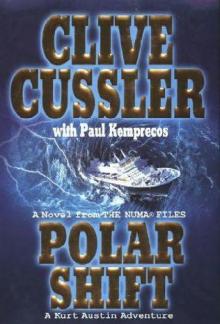 Polar Shift
Polar Shift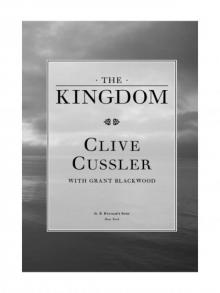 The Kingdom
The Kingdom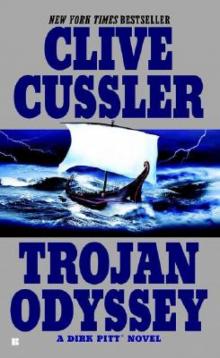 Trojan Odyssey
Trojan Odyssey Shadow Tyrants
Shadow Tyrants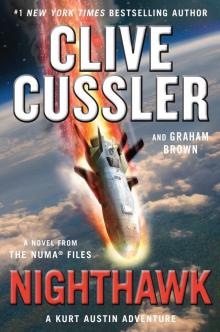 Nighthawk
Nighthawk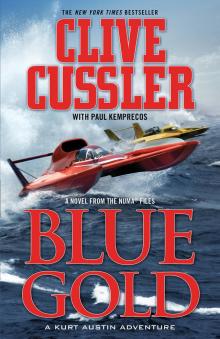 Blue Gold
Blue Gold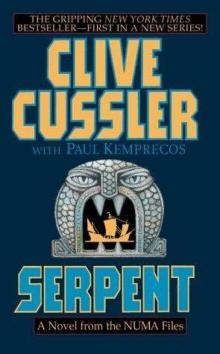 Serpent
Serpent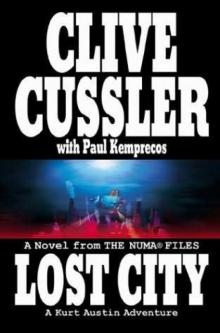 Lost City
Lost City The Gangster
The Gangster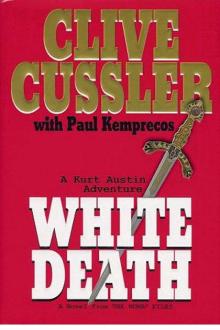 White Death
White Death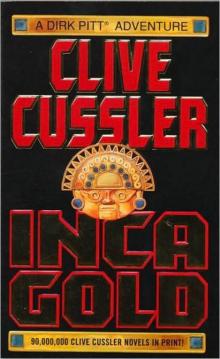 Inca Gold
Inca Gold The Mayan Secrets
The Mayan Secrets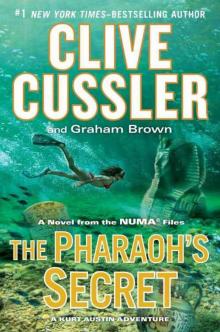 The Pharaoh's Secret
The Pharaoh's Secret The Emperor's Revenge
The Emperor's Revenge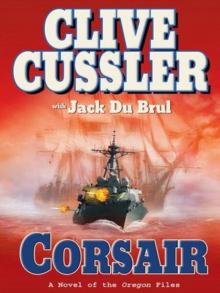 Corsair
Corsair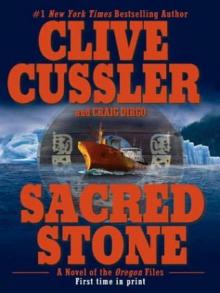 Sacred Stone
Sacred Stone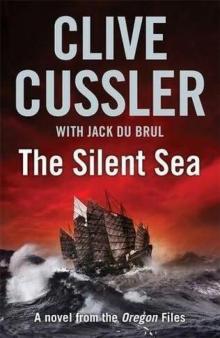 The Silent Sea
The Silent Sea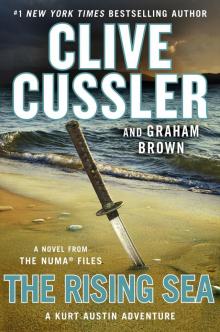 The Rising Sea
The Rising Sea Black Wind
Black Wind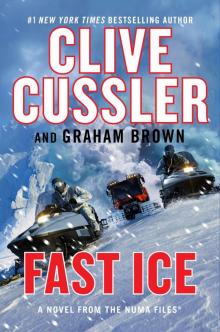 Fast Ice
Fast Ice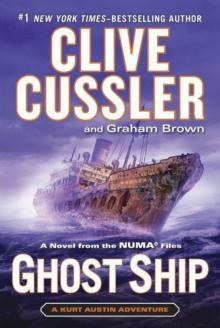 Ghost Ship
Ghost Ship Marauder
Marauder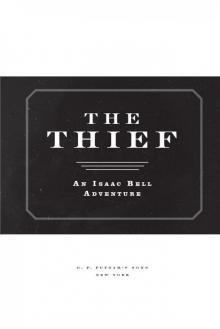 The Thief
The Thief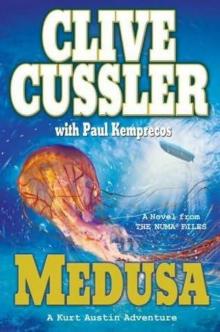 Medusa
Medusa Typhoon Fury
Typhoon Fury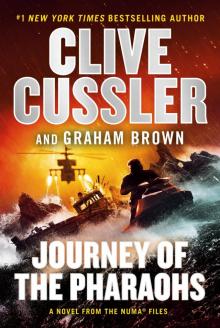 Journey of the Pharaohs
Journey of the Pharaohs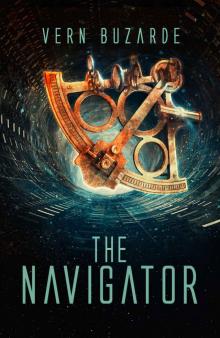 The Navigator
The Navigator The Saboteurs
The Saboteurs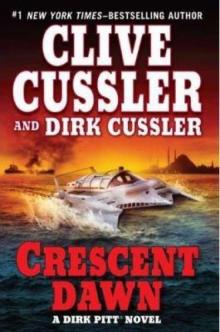 Crescent Dawn
Crescent Dawn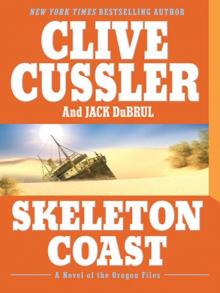 Skeleton Coast
Skeleton Coast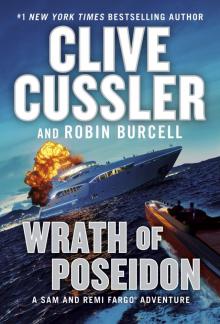 Wrath of Poseidon
Wrath of Poseidon The Mediterranean Caper
The Mediterranean Caper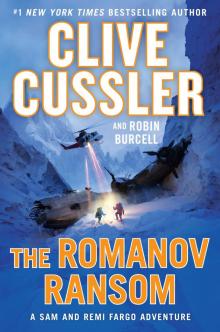 The Romanov Ransom
The Romanov Ransom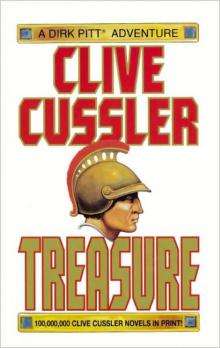 Treasure
Treasure The Race
The Race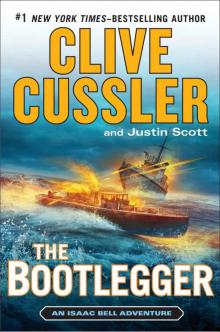 The Bootlegger
The Bootlegger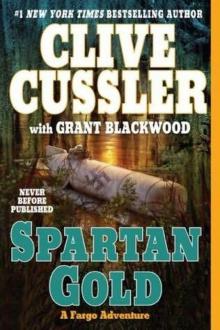 Spartan Gold
Spartan Gold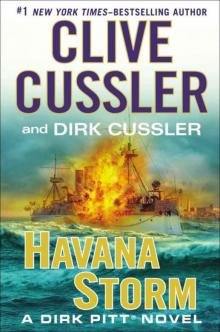 Havana Storm
Havana Storm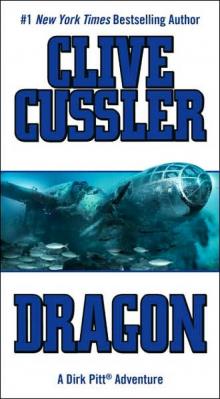 Dragon
Dragon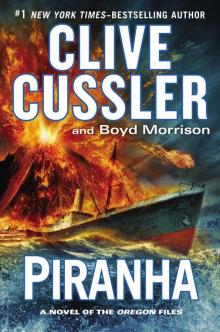 Piranha
Piranha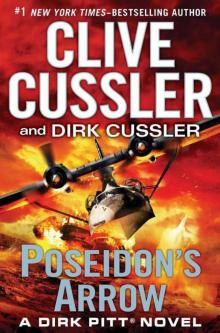 Poseidon's Arrow
Poseidon's Arrow The Cutthroat
The Cutthroat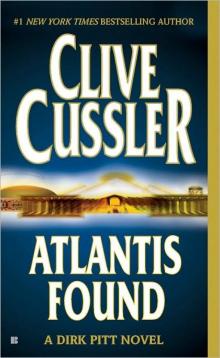 Atlantis Found
Atlantis Found The Jungle
The Jungle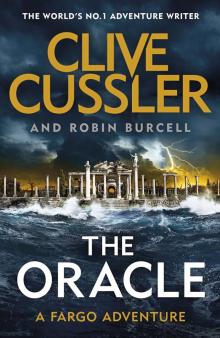 The Oracle
The Oracle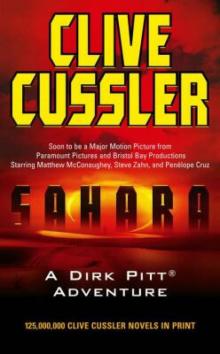 Treasure / Dragon / Sahara: Clive Cussler Gift Set
Treasure / Dragon / Sahara: Clive Cussler Gift Set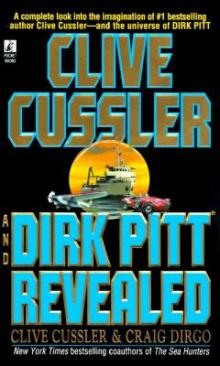 Clive Cussler and Dirk Pitt Revealed
Clive Cussler and Dirk Pitt Revealed The Sea Hunters
The Sea Hunters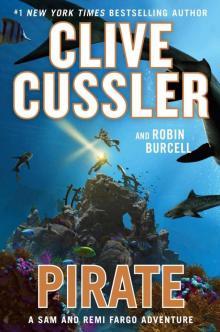 Pirate
Pirate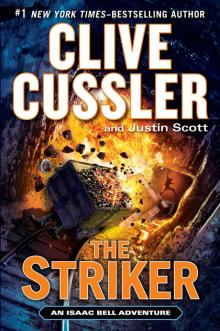 The Striker
The Striker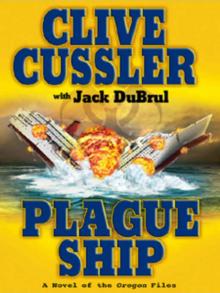 Plague Ship
Plague Ship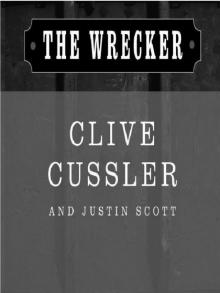 The Wrecker
The Wrecker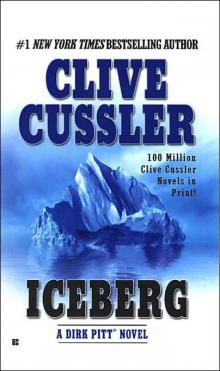 Iceberg
Iceberg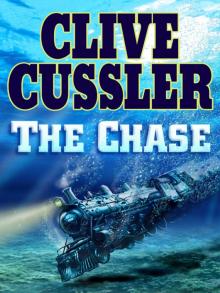 The Chase
The Chase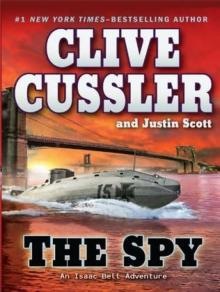 The Spy
The Spy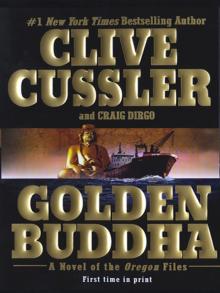 Golden Buddha
Golden Buddha The Titanic Secret
The Titanic Secret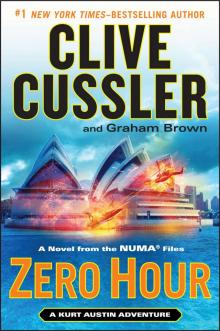 Zero Hour
Zero Hour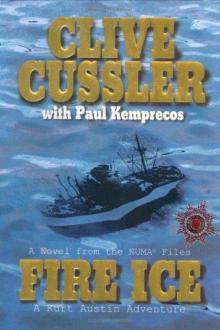 Fire Ice
Fire Ice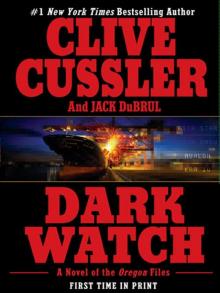 Dark Watch
Dark Watch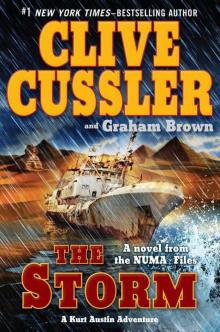 The Storm
The Storm The Assassin
The Assassin Vixen 03
Vixen 03 Arctic Drift
Arctic Drift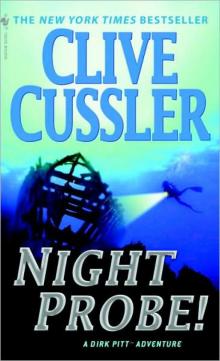 Night Probe!
Night Probe!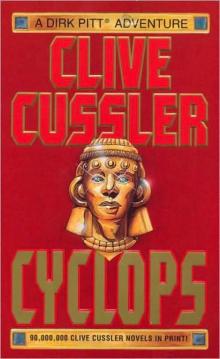 Cyclops
Cyclops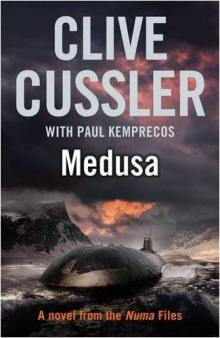 Medusa nf-8
Medusa nf-8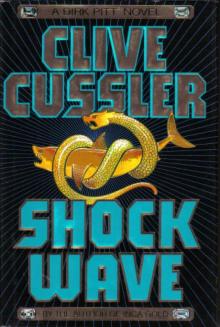 Shock Wave dp-13
Shock Wave dp-13 Marauder (The Oregon Files)
Marauder (The Oregon Files)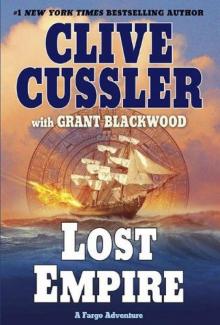 Lost Empire fa-2
Lost Empire fa-2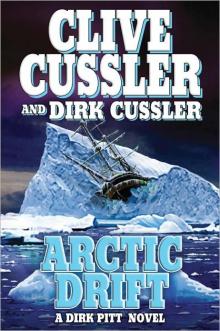 Arctic Drift dp-20
Arctic Drift dp-20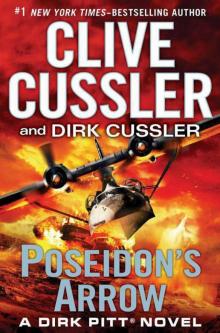 Dirk Pitt 22 - Poseidon's Arrow
Dirk Pitt 22 - Poseidon's Arrow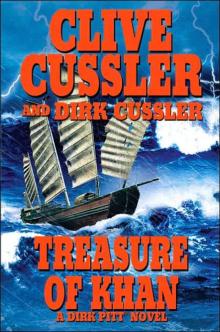 Treasure of Khan dp-19
Treasure of Khan dp-19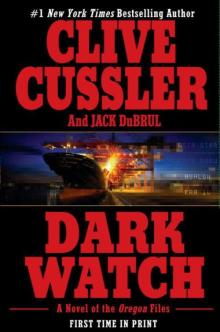 Dark Watch of-3
Dark Watch of-3 Devil's Gate
Devil's Gate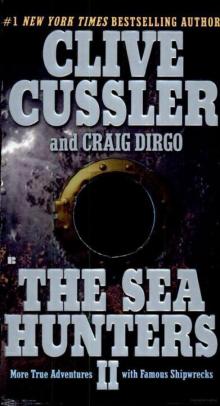 The Sea Hunters II: More True Adventures with Famous Shipwrecks
The Sea Hunters II: More True Adventures with Famous Shipwrecks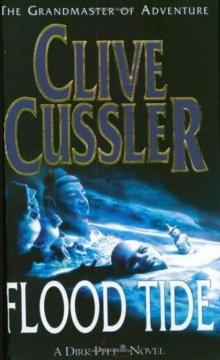 Flood Tide dp-14
Flood Tide dp-14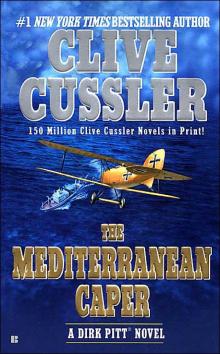 The Mediterranean Caper dp-2
The Mediterranean Caper dp-2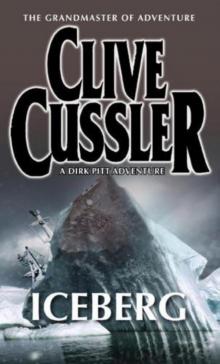 Iceberg dp-3
Iceberg dp-3 Sahara dpa-11
Sahara dpa-11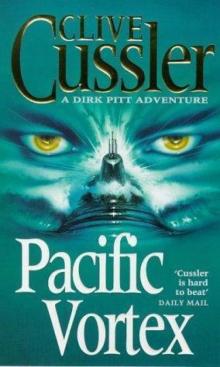 Pacific Vortex! dp-1
Pacific Vortex! dp-1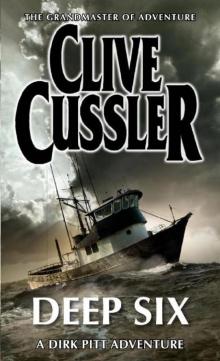 Deep Six dp-7
Deep Six dp-7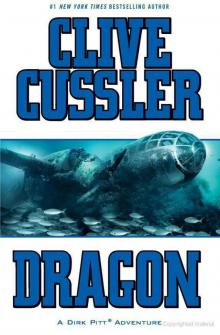 Dragon dp-10
Dragon dp-10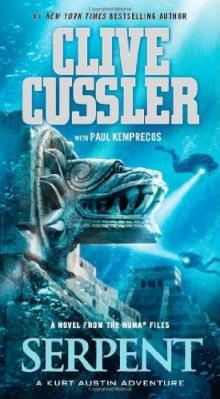 Serpent nf-1
Serpent nf-1 Havana Storm (Dirk Pitt Adventure)
Havana Storm (Dirk Pitt Adventure)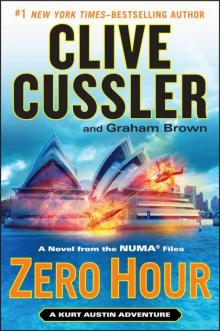 Zero Hour nf-11
Zero Hour nf-11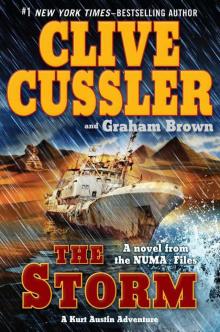 The Storm nf-10
The Storm nf-10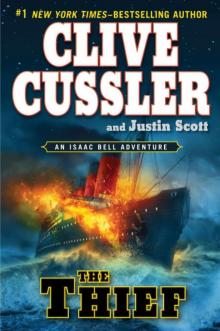 The Thief ib-5
The Thief ib-5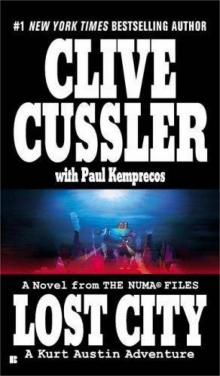 Lost City nf-5
Lost City nf-5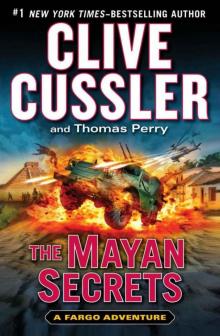 The Mayan Secrets fa-5
The Mayan Secrets fa-5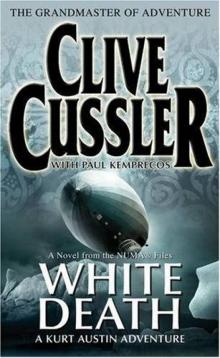 White Death nf-4
White Death nf-4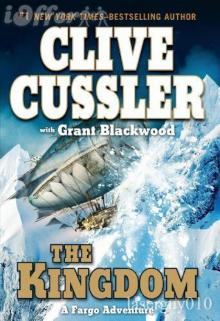 The Kingdom fa-3
The Kingdom fa-3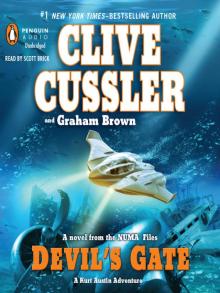 Devil's Gate nf-9
Devil's Gate nf-9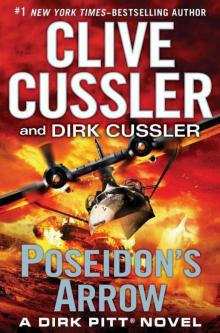 Poseidon's Arrow dp-22
Poseidon's Arrow dp-22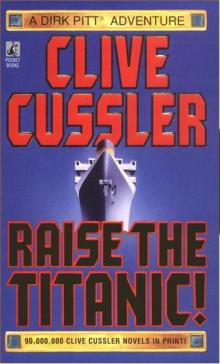 Raise the Titanic dp-4
Raise the Titanic dp-4 Shadow Tyrants--Clive Cussler
Shadow Tyrants--Clive Cussler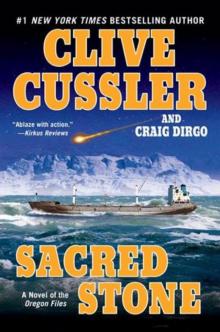 Sacred Stone of-2
Sacred Stone of-2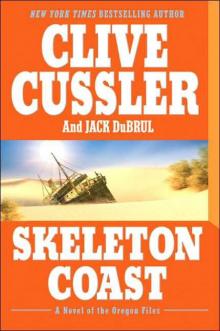 Skeleton Coast tof-4
Skeleton Coast tof-4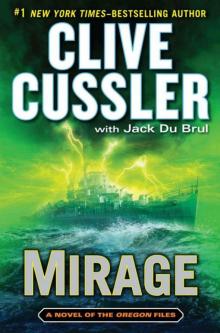 Mirage tof-9
Mirage tof-9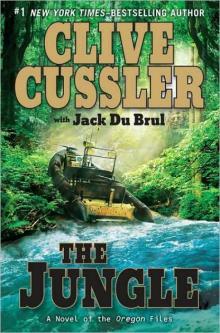 The Jungle of-8
The Jungle of-8 The Emperor's Revenge (The Oregon Files)
The Emperor's Revenge (The Oregon Files)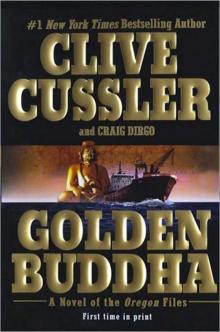 Golden Buddha of-1
Golden Buddha of-1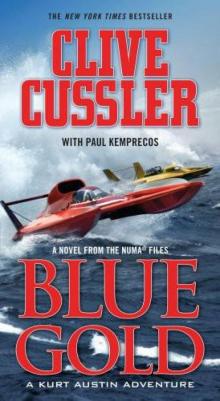 Blue & Gold
Blue & Gold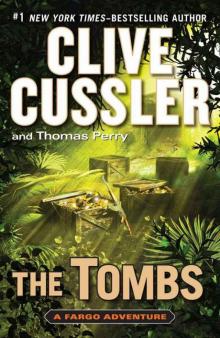 The Tombs fa-4
The Tombs fa-4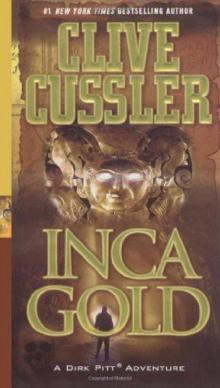 Inca Gold dp-12
Inca Gold dp-12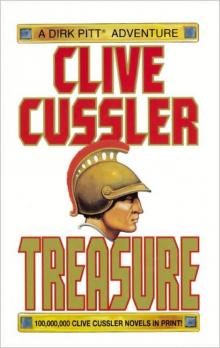 Treasure dp-9
Treasure dp-9 Atlantis Found dp-15
Atlantis Found dp-15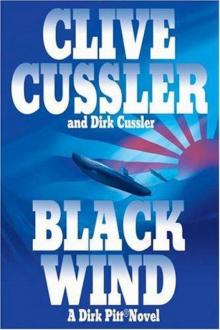 Black Wind dp-18
Black Wind dp-18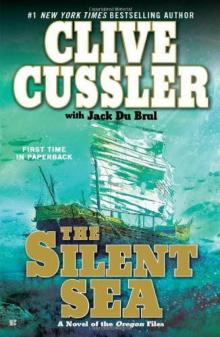 the Silent Sea (2010) tof-7
the Silent Sea (2010) tof-7 The Wrecker ib-2
The Wrecker ib-2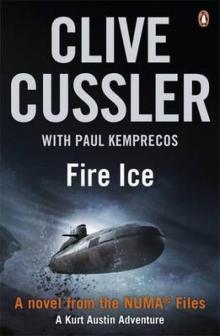 Fire Ice nf-3
Fire Ice nf-3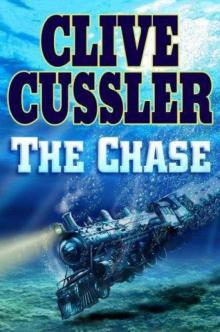 The Chase ib-1
The Chase ib-1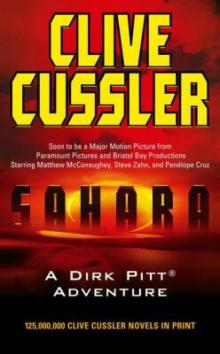 Sahara
Sahara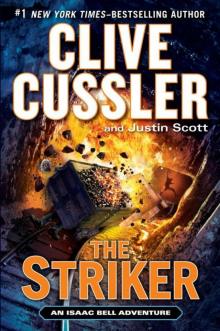 The Striker ib-6
The Striker ib-6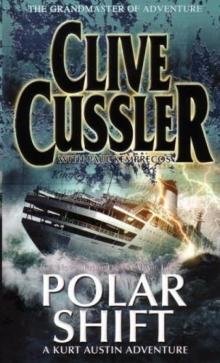 Polar Shift nf-6
Polar Shift nf-6 The Race ib-4
The Race ib-4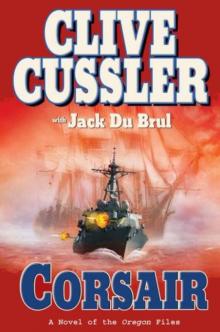 Corsair of-6
Corsair of-6 Cyclops dp-8
Cyclops dp-8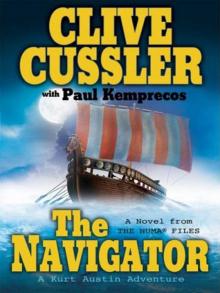 The Navigator nf-7
The Navigator nf-7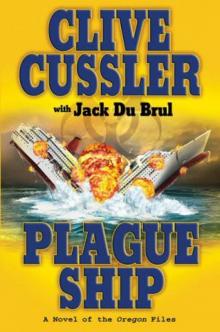 Plague Ship tof-5
Plague Ship tof-5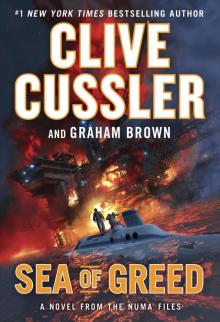 Sea of Greed
Sea of Greed Vixen 03 dp-5
Vixen 03 dp-5 Thriller 2: Stories You Just Can't Put Down
Thriller 2: Stories You Just Can't Put Down